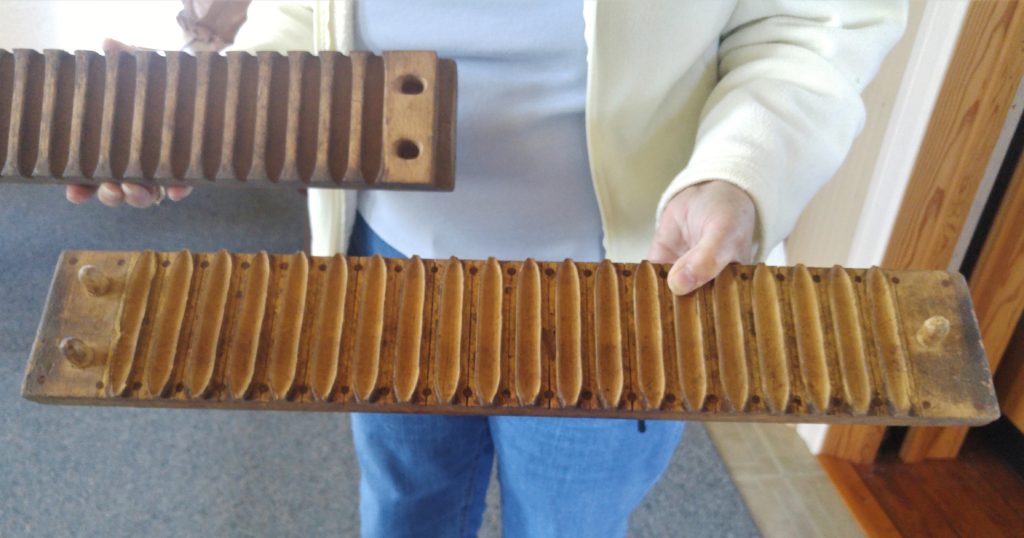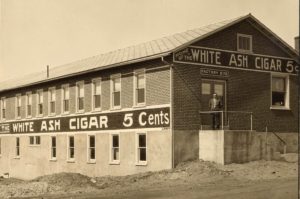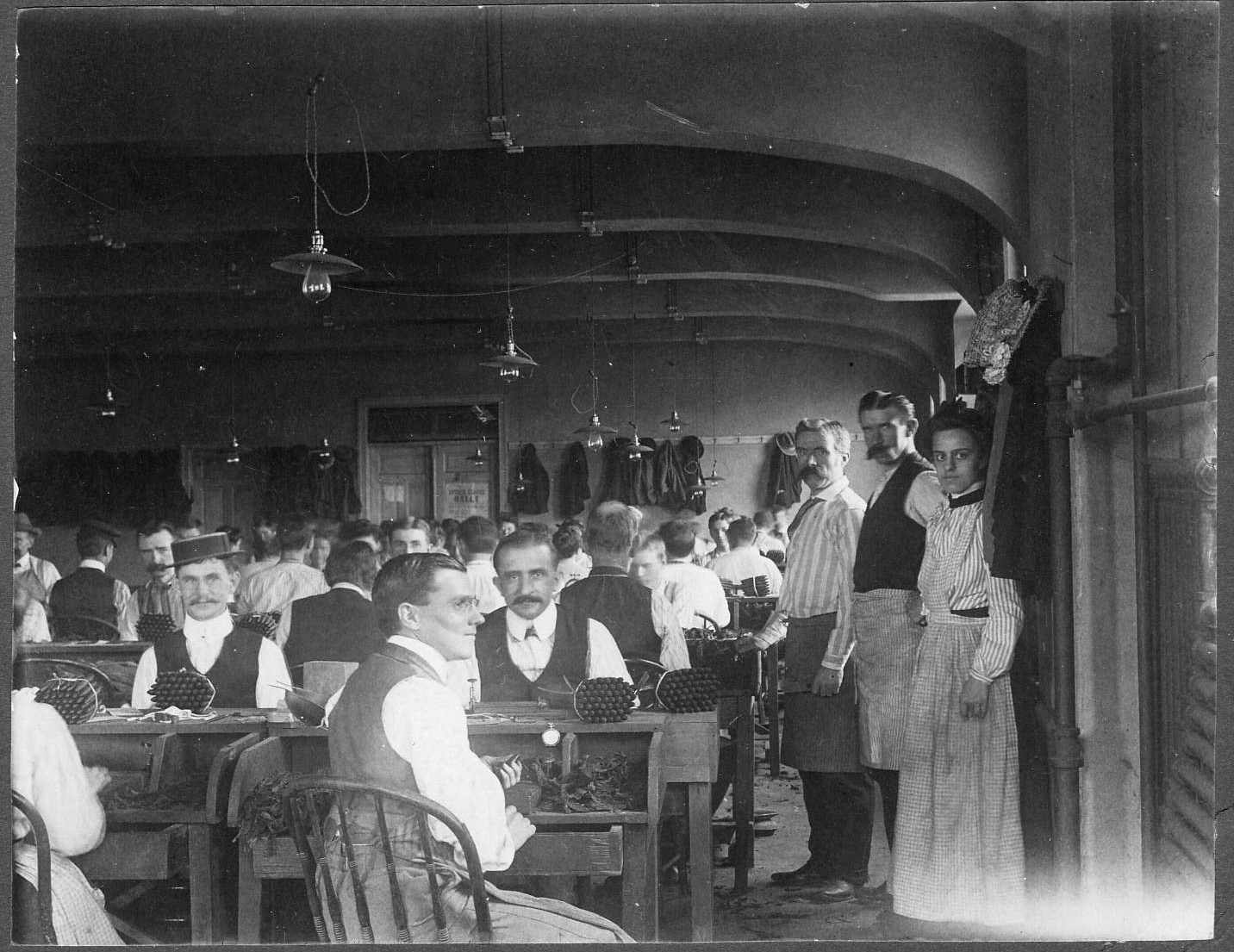Outside Havana, the best cigars once came from Bucks County.
It was a bitterly cold day in Canaan Valley as I pulled over beneath 4,000-foot Cabin Mountain in West Virginia. This was after a white-knuckle descent down another mountain in a blizzard. Both Mary Anne and I needed a respite. So I unpacked a stogy, a rather thin cigar favored by Conestoga drivers in Wild West days and named for the horse-drawn wagons built in Lancaster by Mennonite settlers. The drivers rolled tobacco into thin ropes they called “stogies” to be broken apart and smoked on long trips. So, it seemed a cool thing to do – smoke a stogy in Almost Heaven West Virginia. Nothing like taking a drag as a young adventurer absorbed by the beauty of the snow-crusted landscape. I encouraged Mary Anne to take a puff too. Cough, cough. We both concluded it was an acquired taste, not that enjoyable. But it manifested a certain sex appeal to me. I was suddenly Clint Eastwood.

Trips to Canaan Valley back then were among our favorite destinations. On those treks, I always carried a few stogies in my backpack. My pals at the University of Florida introduced me to them on our Appalachian Trail outings. I had no idea until recently that Bucks was once the stogy and cigar capital of the country. They were coming off production lines and in households everywhere – from Quakertown in Upper Bucks down through the center of the county.

I discovered this during a family outing to Finland, a tiny village once known as “the Poconos of Bucks County” in the rugged northwest corner of Upper Bucks. It was at the nearby Milford Township Historical Society headquarters in Spinnerstown that grandson Dashiell noticed a strange, wooden contraption lined with what seemed like cocoons. Sandy Park, our Finnish guide, explained the device was used to hand roll cigars in the late 1800s. At the time Bucks was the third-largest tobacco grower in the state, harvesting more than a million pounds annually. To handle the volume, 85 cigar finishing plants sprouted in Bucks. Thirty of them were located in the area of Sellersville, Perkasie and Quakertown. Competition came from Philadelphia where the Bayuk Brothers introduced the “Philadelphia Handmade”, nicknamed “the Phillies”, one of history’s biggest sellers.
Though growing local tobacco tapered off in the early 1900s, generations of skilled cigar makers kept the industry alive with tobacco imported by railroad from Lancaster and points south. Production hummed. Boltz, Clymer & Company’s factory in Perkasie, for instance, produced 150,000 cigars a month for export to Hawaii. Hometown boy Horace E. Snyder caught cigar fever. He and his family rolled them in their home in what was called a “buck-eye” shop. Horace would pack the cigars in his suitcase, hop on a bicycle and pedal to nearby stores to sell them. He branded his most popular the White Ash, eventually earning enough to build his own cigar-wrapping factory in the 1920s on Fourth Street in Perkasie. By 1930, he added four adjacent plants employing 400 who rolled 30 million in a single year.

Eventually, mechanization and construction of large tobacco factories in the South toppled Bucks as a kingpin. Still the county maintained a toe-hold by introducing the 5-cent Cinco from the Eisenlohr Factory in Perkasie. Often called “the Stinko”. U.S. Vice President Tom Marshall famously declared during World War I after smoking one, “What this nation needs is a good 5-cent cigar.”
When cigarettes came along early in the 20th century, cigar sales began a steady decline. An episode at the White House in 1910 set the stage. President William Howard Taft lit the cigarette of the Russian ambassador’s wife at a public reception. “Within five minutes, nearly every European woman in the room was smoking,” reported one newspaper. Three years later, R. J. Reynolds introduced the Camel as the “first modern cigarette”. Thousands of young American soldiers came home from World War I in Europe addicted to cigarettes. Advertising and the movies further popularized them. By 1920, 100 billion cigarettes were on the market around the world. Four years later, Philip Morris branded its Marlboro cigarette as the “woman’s cigarette.”
Back home in Bucks, the cigar industry slowly died. In 1966 the last factory in Perkasie – Snyder’s Cigars – closed. Local stogy makers and the Bucks-branded Cinco are now history. Ceremonial cigars and the cigar culture, of course, live on in ye olde smoking parlors like Ned’s Cigar Store on Main Street in Newtown and new-wave businesses like the Boardroom Cigar and Golf Lounge in Deon Square in Fairless Hills. It’s there that you can find aficionados who adhere to Mark Twain’s philosophy: “I smoke in moderation. Only one cigar at a time.”
Sources include Rick Doll of the Perkasie Historical Society Museum, Sandy Park of the Milford Township Historical Society, and a time line posted by the National Cigar Museum at www.nationalcigarmuseum.com/cigar_history/history_1910-1960.html

